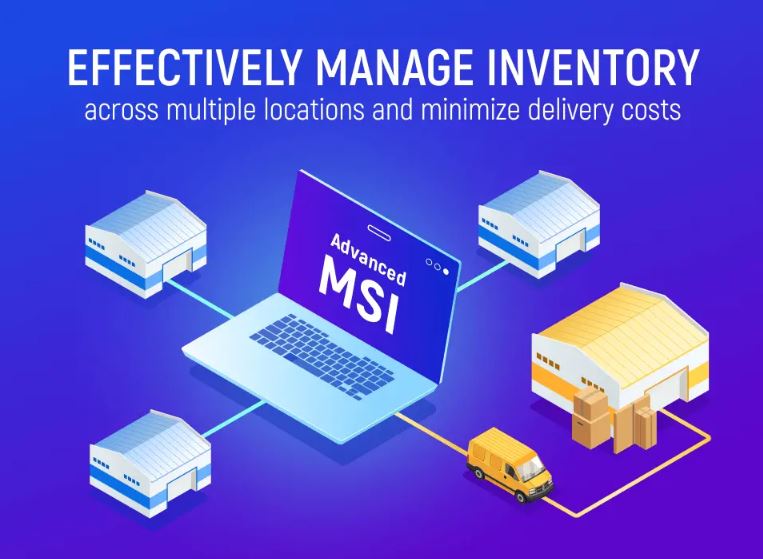Magento 2 MSI Module Overview: A Practical Guide to Multi-Source Inventory Management
Managing inventory efficiently is essential for any eCommerce business, especially when dealing with multiple warehouses, suppliers, or retail locations. That’s where the Magento 2 MSI (Multi-Source Inventory) module comes in. Introduced to help merchants better manage stock across multiple sources, Magento 2 MSI brings flexibility and control that wasn’t possible with the default single inventory system.
In this blog post, we’ll explore what the Magento 2 MSI module is, its key features, how it works, and how to set it up for your store.
What is Magento 2 MSI?
Magento 2 MSI stands for Multi-Source Inventory, a built-in feature in Magento 2 (from version 2.3 onwards). Before MSI, Magento treated all product inventory as a single stock pool. That worked well for smaller stores but was limiting for growing businesses with complex supply chains.
With MSI, Magento allows merchants to manage inventory across multiple physical locations—whether it’s regional warehouses, dropshippers, or brick-and-mortar stores. This enables better control over order fulfillment, stock allocation, and inventory tracking.
Key Features of Magento 2 MSI
Magento 2 MSI isn’t just about adding more warehouses—it’s a full inventory management solution that improves stock handling, performance, and automation. Here are some of its most useful features:
1. Multiple Source Management
You can define different inventory sources—like warehouses, third-party logistics (3PL) centers, or retail outlets—and assign products to one or multiple sources. Each source has its own stock level and location data.
2. Source Priority for Order Fulfillment
Magento 2 MSI lets you set source priorities based on shipping regions or performance. This means Magento will automatically pick the best source to fulfill an order—reducing shipping time and cost.
3. Salable Quantity Calculation
Salable Quantity is different from stock quantity. It shows the actual amount available for sale after considering pending orders and reservations. This prevents overselling and improves accuracy.
4. Stock Reservation System
When a customer places an order, Magento 2 MSI reserves the stock instead of immediately reducing it. This ensures accurate stock availability across checkout sessions, even with high traffic.
5. In-Store Pickup Support
MSI also integrates with the in-store pickup feature, allowing customers to collect products from a nearby store if it’s available at that location.
6. Support for Backorders and Partial Shipments
You can configure backorders per source and allow partial fulfillment from different inventory locations, improving customer experience and order management flexibility.
Setting Up Magento 2 MSI
Now that you know what it does, here’s a quick guide to setting up Magento 2 MSI on your store.
Step 1: Add Sources
In the Magento Admin Panel, navigate to Stores > Inventory > Sources. Here, you can create multiple sources by providing details like name, location, contact info, and time zone.
Step 2: Define Stocks
Next, go to Stores > Inventory > Stocks. A stock in Magento is a group of sources. You can assign different sources to a single stock (like a sales channel or website) and manage how products are allocated between them.
Step 3: Assign Products to Sources
Go to your product catalog and open a product. Under the “Sources” tab, assign the product to one or more sources and specify the quantity available in each.
Step 4: Configure Source Priority
When multiple sources are available, Magento uses a priority system to decide which source to use for order fulfillment. You can configure this under Stores > Inventory > Stocks, and then click into the stock to set priorities.
Step 5: Enable In-Store Pickup (Optional)
If you’re running physical stores, enabling in-store pickup can enhance the customer experience. Set up pickup locations and connect them to specific sources.
When to Disable Magento 2 MSI
While Magento 2 MSI offers robust inventory management, some merchants with simpler setups may find it unnecessary. If you only manage one stock location or use a third-party ERP or WMS that conflicts with MSI, you might consider disabling it. Keep in mind that this requires some technical work and should be handled with care to avoid disrupting your order workflows.
Final Thoughts
The Magento 2 MSI module is a powerful tool for modern eCommerce businesses that operate across multiple locations. It enhances inventory accuracy, streamlines order fulfillment, and improves customer satisfaction by ensuring products are available where and when they’re needed.
Whether you’re scaling your operations or just want better control over your stock, taking the time to understand and implement Magento 2 MSI properly can pay off in a big way.



